The Golden Bee takes its name from the refreshment rooms which occupied part of this site in the early 20th century.
Illustrations and text about Shakespeare’s Stratford.
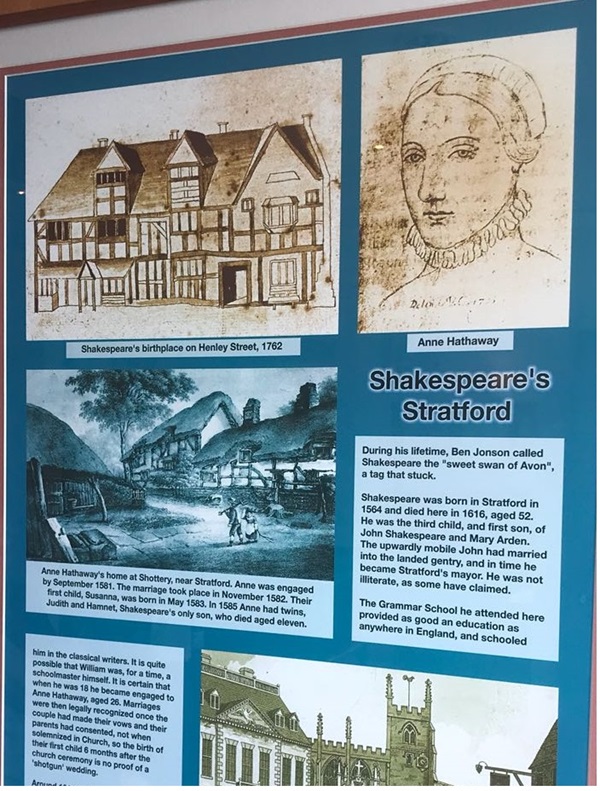
The text reads: During his lifetime, Ben Jonson called Shakespeare the “sweet swan of Avon”, a tag that stuck.
Shakespeare was born in Stratford in 1594 and died here in 1616, aged 52. He was the third child, and first son, of John Shakespeare and Mary Arden. The upwardly mobile John had married into the landed gentry, and in time he became Stratford’s mayor. He was not illiterate, as some have claimed.
The Grammar School he attended here provided as good an education as anywhere in England, and schooled him in the classical writers. It is quite possible that William was, for a time, a schoolmaster himself. It is certain that when he was 18 he became engaged to Anne Hathaway, aged 26. Marriages were then legally recognized once the couple had made their vows and their parents had consented, not when solemnized in Church, so the birth of their child 6 months after the church ceremony is no proof of a ‘shotgun’ wedding.
Around 1611 Shakespeare returned here to live with his wife and daughter at New Place. He had long been investing in local property, and could live as a well-to-do country gentleman. Failing health – he only lived five more years – may have prompted his ‘retirement’.
New Place (left), the Guild Chapel and, beyond, the timbered houses where the Grammar School was located.
Anne Hathaway’s home at Shottery, near Stratford. Anne was engaged by September 1581. The marriage took place in November 1582. Their first child, Susanna, was born in May 1583. In 1585 Anne had twins, Judith and Hamnet, Shakespeare’s only son, who died aged eleven.
Illustrations and text about Shakespeare’s childhood.
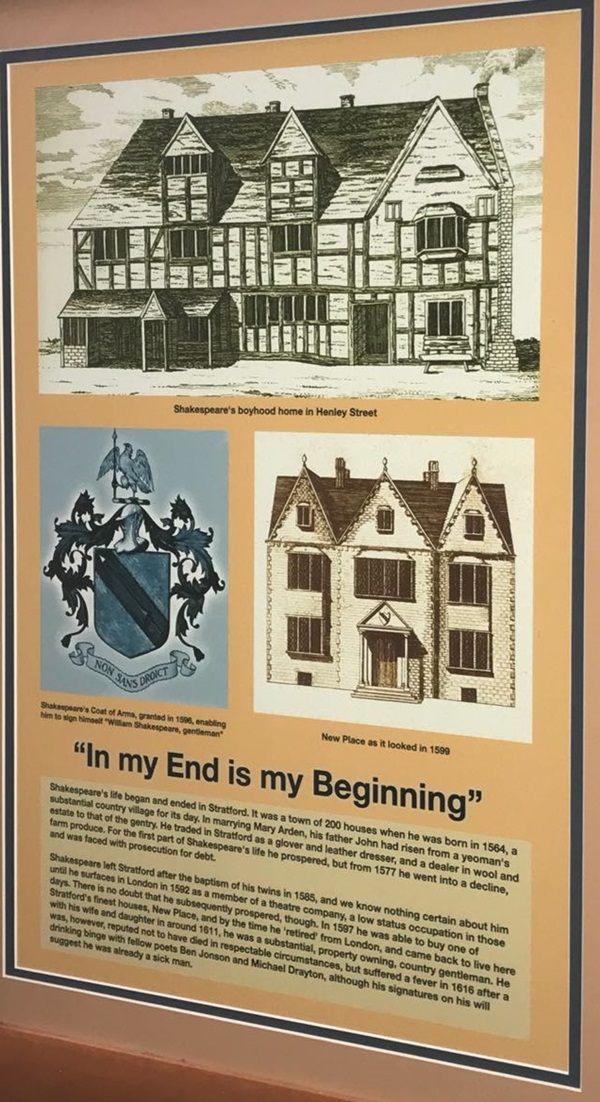
The text reads: Shakespeare’s life began and ended in Stratford. It was a town of 200 houses where he was born in 1564, a substantial country village for its day. In marrying Mary Arden, his father John had risen from a yeoman’s estate to that of the gentry. He traded in Stratford as a glover and leather dresser, and a dealer in wool and farm produce. For the first part of Shakespeare’s life he prospered, but from 1577 he went into a decline, and was faced with prosecution for debt.
Shakespeare left Stratford after the baptism of his twins in 1585, and we know nothing certain about him until he surfaces in London in 1592 as a member of a theatre company, a low status occupation in those days. There is no doubt that he subsequently prospered, though. In 1597 he was able to buy one of Stratford’s finest houses. New Place, and by the time he ‘retired’ from London, and came back to live here with his wife and daughter in around 1611, he was a substantial, property owning, country gentleman. He was, however, reputed not to have died in respectable circumstances, but suffered a fever in 1616 after a drinking binge with fellow poets Ben Jonson and Michael Drayton, although his signatures on his will suggest he was already a sick man.
Top: Shakespeare’s boyhood home in Henley Street
Left: Shakespeare’s Coat of Arms, granted in 1506, enabling him to sign himself “William Shakespeare, gentleman”
Right: New Place as it looked in 1599.
Illustrations and text about the Gunpowder Plot.
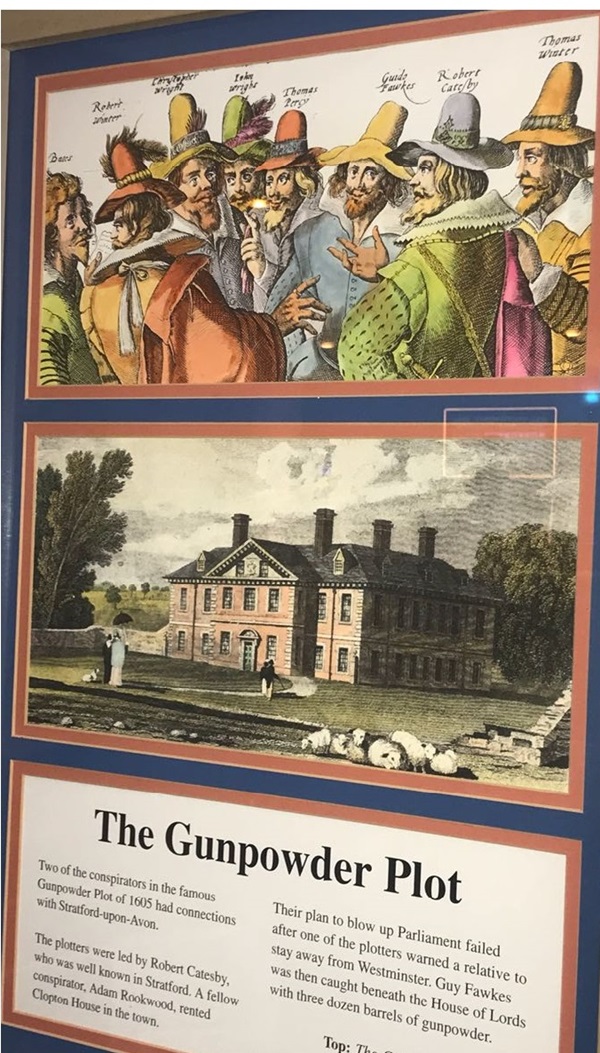
The text reads: Two of the conspirators in the famous Gunpowder Plot of 1605 had connections with Stratford-upon-Avon.
The plotters were led by Robert Catesby, who was well known in Stratford. A fellow conspirator, Adam Rookwood, rented Clopton House in the town.
Their plan to blow up Parliament failed after one of the plotters warned a relative to stay away from Westminster. Guy Fawkes was then caught beneath the House of Lords with three dozen barrels of gunpowder.
Top: The Conspirators
Above: Clopton House.
Illustrations and text about Stratford in the making.
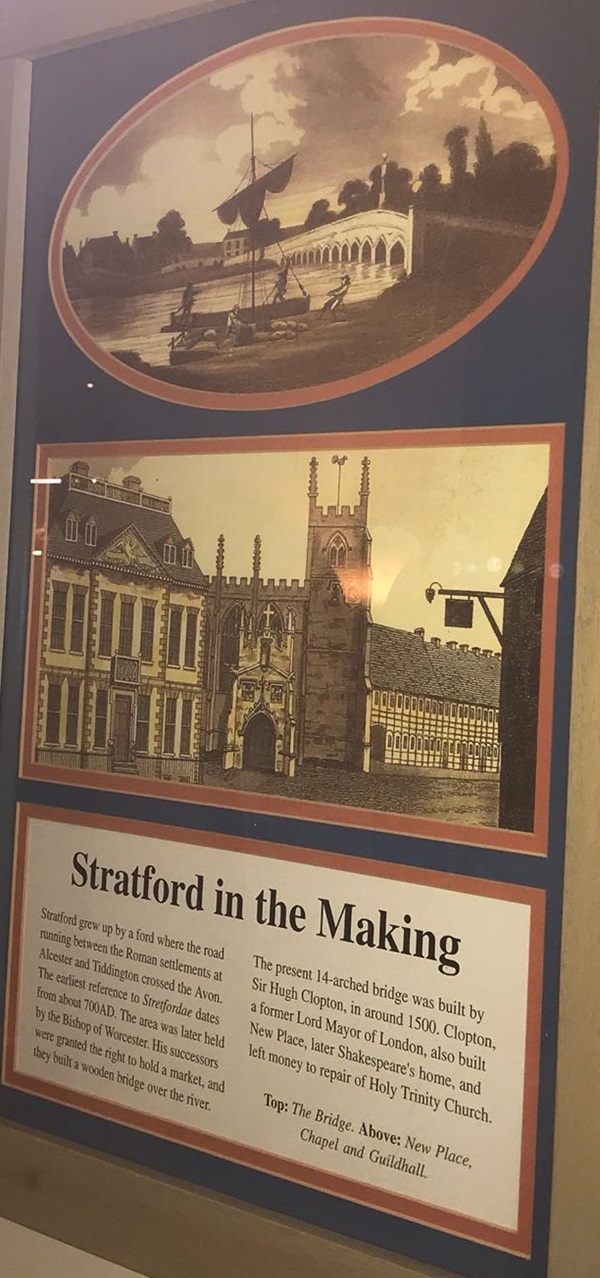
The text reads: Stratford grew up by a ford where the road running between the Roman settlements at Alcester and Tiddington crossed the Avon. The earliest reference to Stretfordae dates from about 700AD. The area was later held by the Bishop of Worcester. His successors were granted the right to hold a market, and they built a wooden bridge over the river.
The present 14-arched bridge was built by Sir Hugh Clopton, in around 1500. Clopton, a former Lord Mayor of London, also built New Place, later Shakespeare’s home, and left money to repair the Holy Trinity Church.
Top: The Bridge Above: New Place, Chapel and Guildhall.
Illustrations and text about the real Shakespeare.
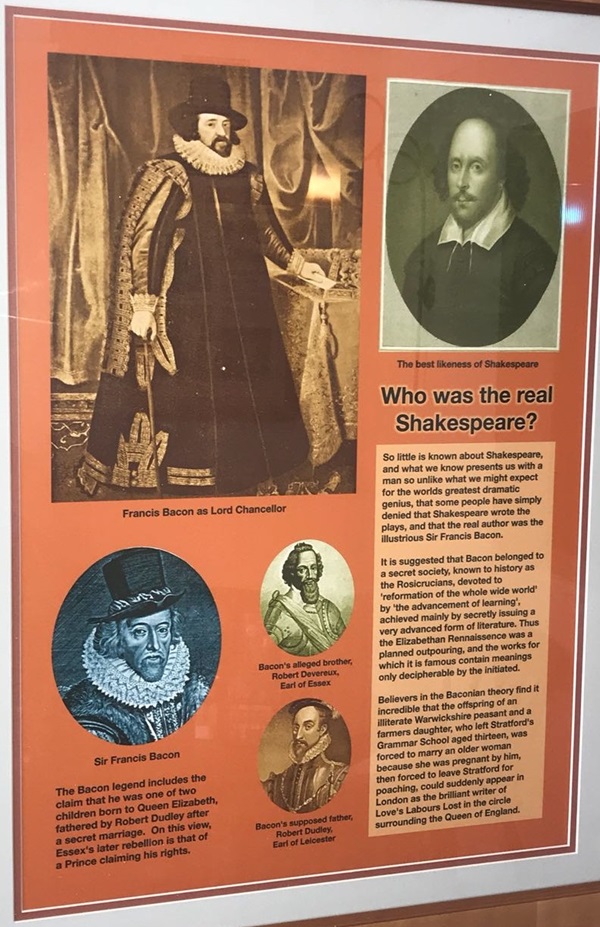
The text reads: So little is known about Shakespeare, and what we know presents us with a man so unlike what we might expect for the world’s greatest dramatic genius, that some people have simply denied that Shakespeare wrote the plays, and that the real author was the illustrious Sir Francis Bacon.
It is suggested that Bacon belonged to a secret society, known to history as the Rosicrucians, devoted to ‘reformation of the whole wide world’, by ‘the advancement of learning’, achieved mainly by secretly issuing a very advanced form of literature. Thus the Elizabeth Renaissance was a planned outpouring, and the works for which it is famous contain meanings only decipherable by the initiated.
Believers in the Baconian theory find it incredible that the offspring of an illiterate Warwickshire peasant and a farmer’s daughter, who left Stratford’s Grammar School aged thirteen, was forced to marry an older woman because she was pregnant by him, then forced to leave Stratford for poaching, could suddenly appear in London as the brilliant writer of Love’s Labours Lost in the circle surrounding the Queen of England.
Top right: The best likeness of Shakespeare
Top left: Francis Bacon as Lord Chancellor
Bottom left: Sir Francis Bacon – The Bacon legend includes the claim that he was one of two children born to Queen Elizabeth, fathered by Robert Dudley after a secret marriage. On this view, Essex’s later rebellion is that of a Prince claiming his rights
Middle: Bacon’s alleged brother, Robert Devereux, Earl of Essex
Bottom middle: Bacon’s supposed father, Robert Dudley, Earl of Leicester.
A photograph of Anne Hathaway’s Cottage, Stratford-upon-Avon.
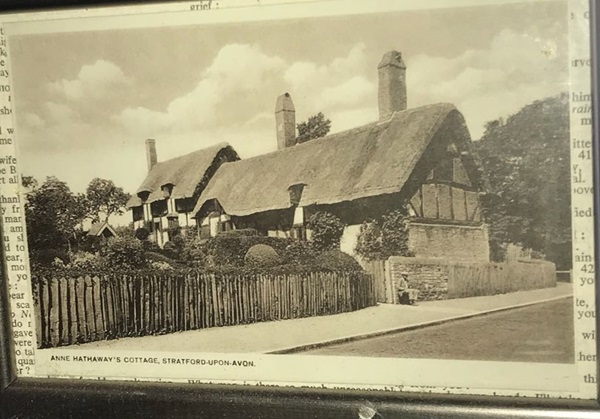
A photograph of Shakespeare’s birthplace, fireplace in museum.
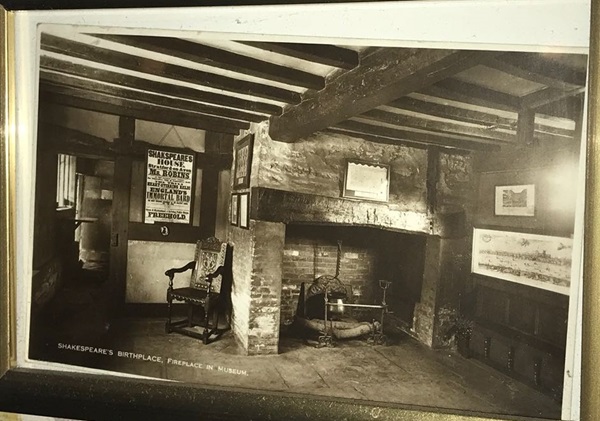
A photograph of Shakespeare’s birth room, Stratford-upon-Avon.
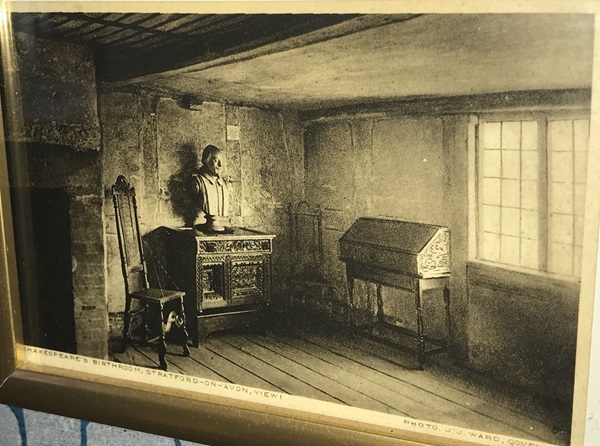
Old photographs of Stratford-upon-Avon, which have relevance to Shakespeare.
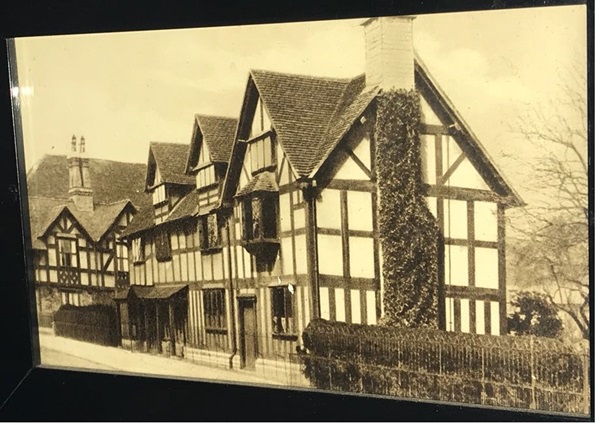
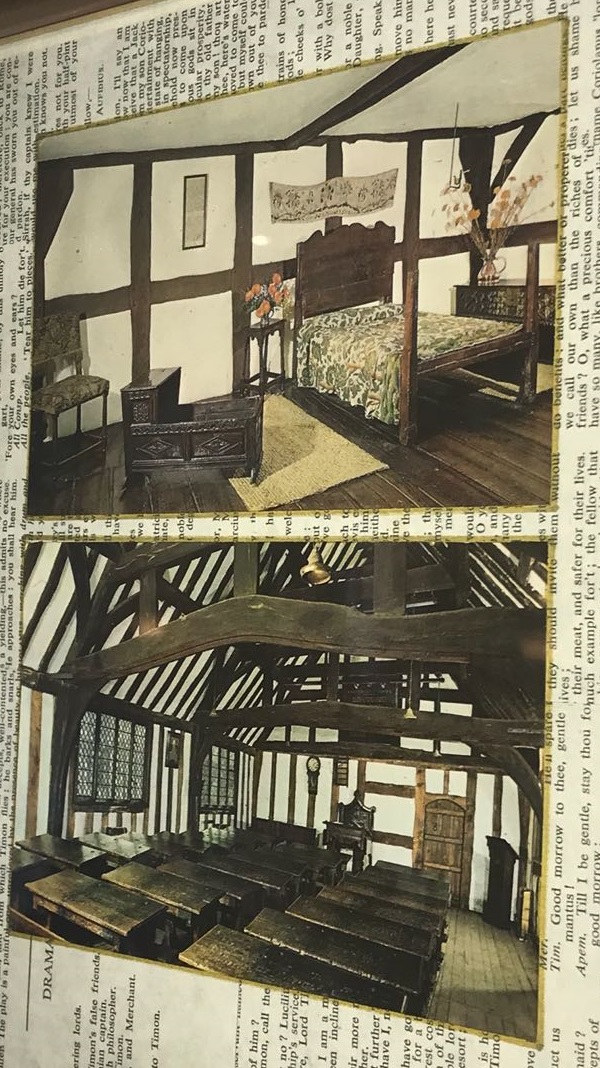
A photograph of Irving as Shylock in the Merchant of Venice.
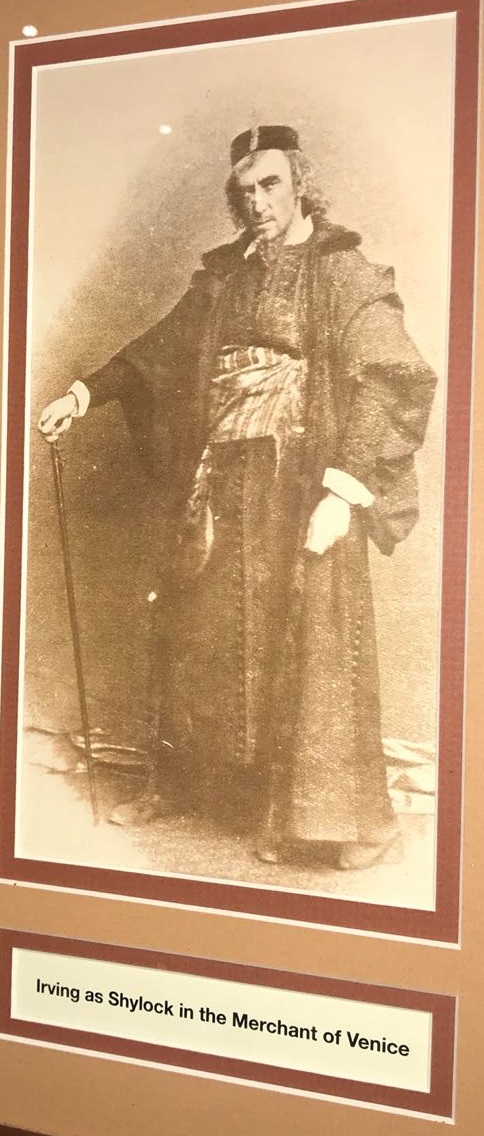
A print of Ellen Terry as the ambitious Lady Macbeth.
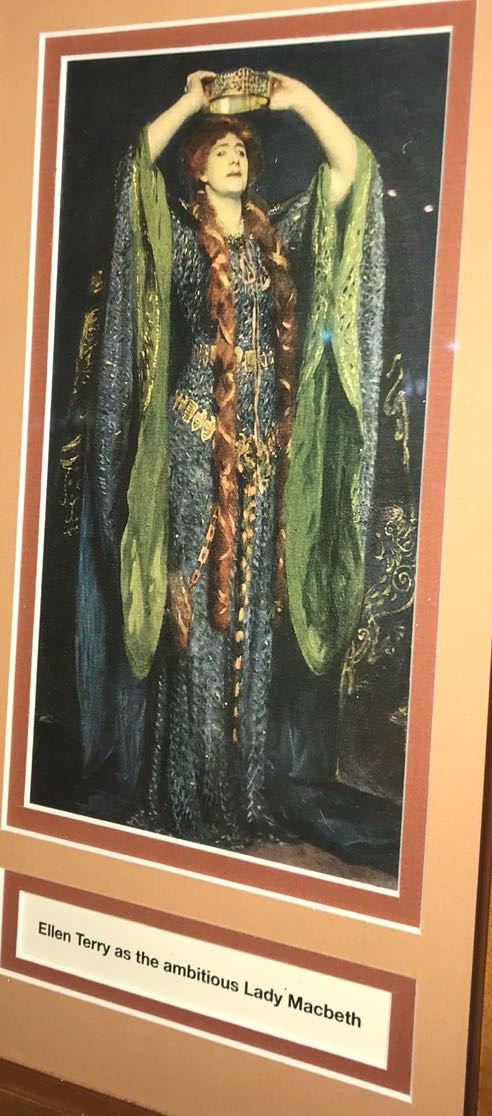
A photograph of Orson Welles as Macbeth in the 1948 film.
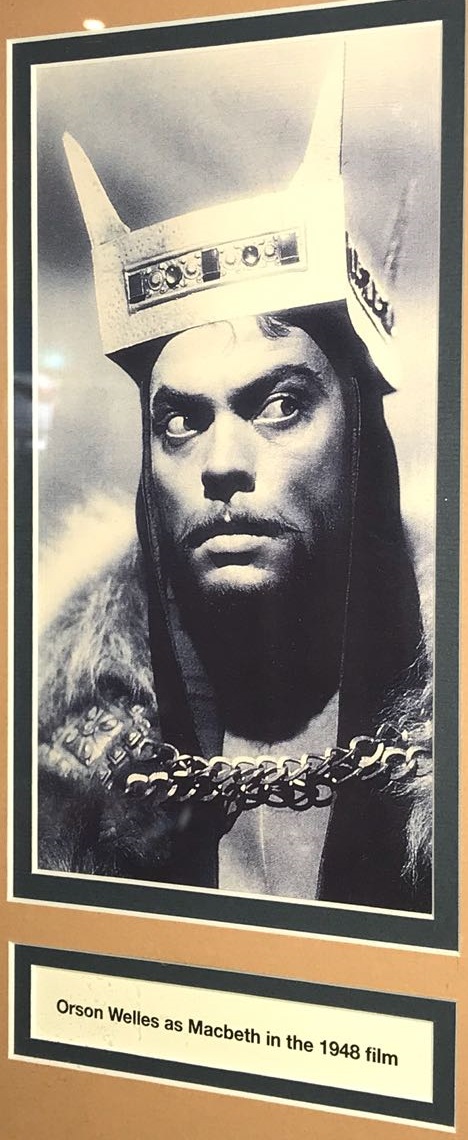
A theatre poster for Henry VI.
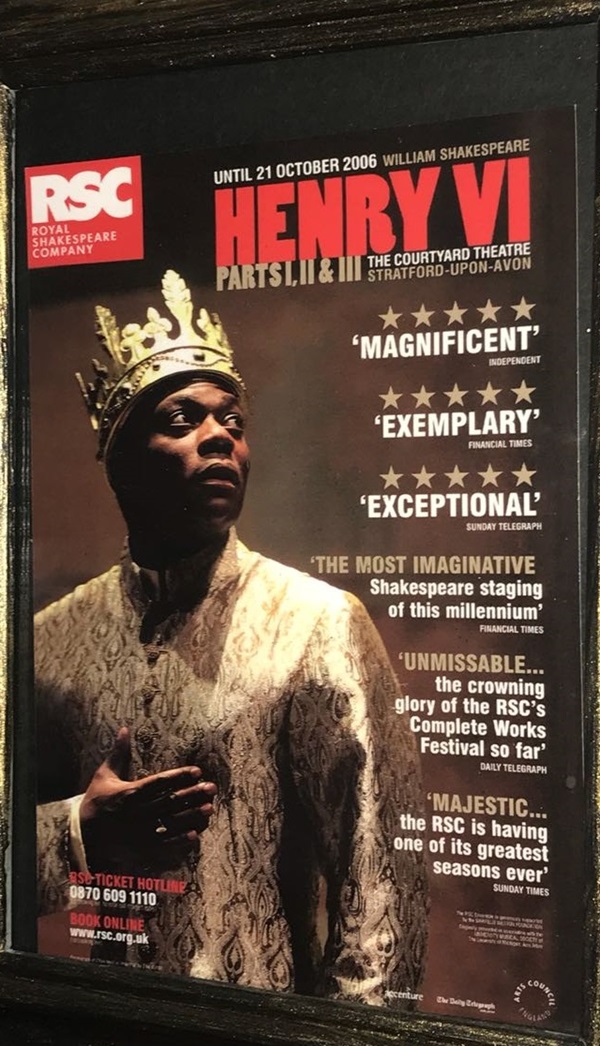
A theatre poster for Romeo and Juliet.
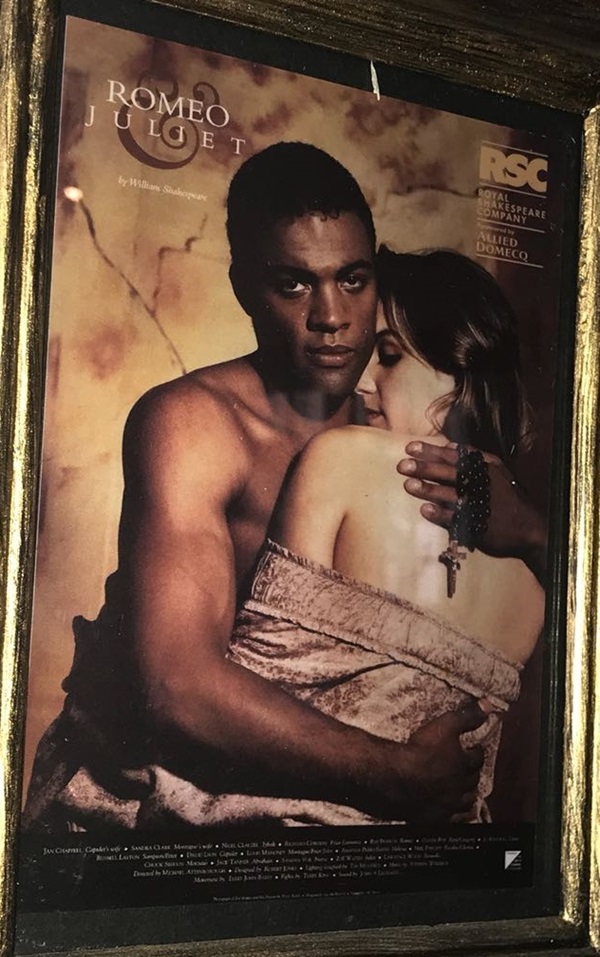
External photograph of the building – main entrance.
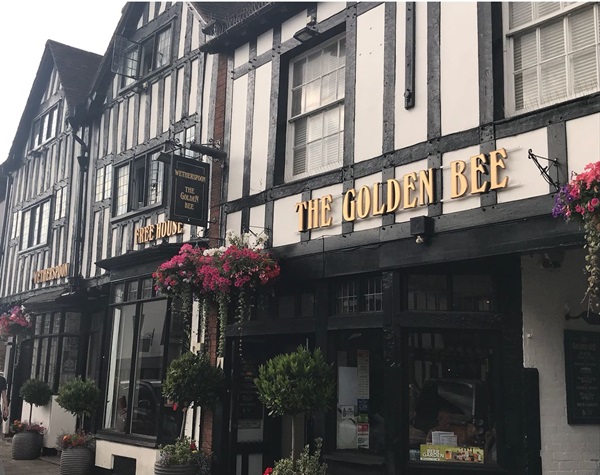
If you have information on the history of this pub, then we’d like you to share it with us. Please e-mail all information to: pubhistories@jdwetherspoon.co.uk